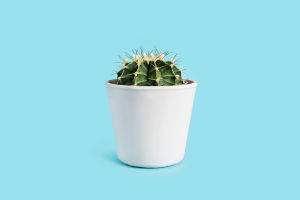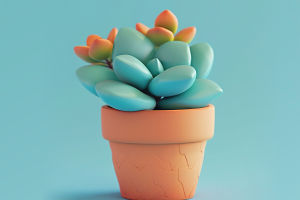Hey, Lykkers! Are you ready to learn all about succulent plants and how to keep them thriving?
We're excited to dive into the world of these unique, low-maintenance beauties that add life and color to any space.
Why Succulents Are So Popular
Succulents have captured our hearts due to their unique appearance, wide variety, and ability to store water in their leaves, making them incredibly low-maintenance. From the spiky allure of aloe to the plump leaves of echeveria, succulents add an interesting element to both indoor and outdoor gardens. Because they're naturally adapted to dry environments, succulents are perfect for those of us who sometimes forget to water our plants! Their ability to thrive with minimal care makes them an ideal choice for beginners and experienced plant lovers alike.
Ideal Growing Conditions for Succulents
Succulents prefer bright, indirect sunlight to keep their vibrant colors and maintain a healthy structure. They do best in a spot that receives about six hours of light per day. However, be careful with direct sunlight exposure for long periods, as it can scorch their leaves. Indoors, a windowsill that receives ample sunlight is a perfect location. Outdoors, they thrive in areas with some morning light and protection from harsh afternoon sun.
SUCCULENT BEGINNER TIPS: WHY POT SIZE AND POT MATERIAL ARE IMPORTANT IN GROWING SUCCULENTS
Video by Succulents Box
Choosing the Right Soil
Proper soil is essential for succulent health. Succulents require well-draining soil that doesn't hold moisture for too long. Standard potting soil retains too much water, which can lead to root rot, so opt for a soil mix specifically designed for succulents and cacti, or add sand or perlite to a regular soil mix to enhance drainage. If planting in pots, ensure the pot has drainage holes to allow excess water to escape, as stagnant water is the number one enemy of healthy succulents.
Watering Techniques for Succulents
Watering succulents can be a bit different from other plants. Rather than frequent watering, succulents prefer a “soak and dry” method, where the soil is thoroughly soaked and allowed to dry out completely before watering again. Depending on the environment, this may mean watering every two to three weeks for indoor plants. Overwatering is a common mistake, so always check the soil dryness before adding more water. During the dormant winter months, reduce watering even further, as succulents need less water when not actively growing.
Common Challenges and Care Tips
One challenge with succulents is preventing overwatering and managing pests like mealybugs. Overwatering can cause leaves to become mushy or drop, so always monitor soil moisture. If pests appear, a gentle solution like diluted neem oil can help without harming the plant. Succulents may also stretch or “etiolate” if they don't get enough sunlight, which causes them to grow tall and leggy. To prevent this, ensure they receive adequate light and consider rotating them regularly.


